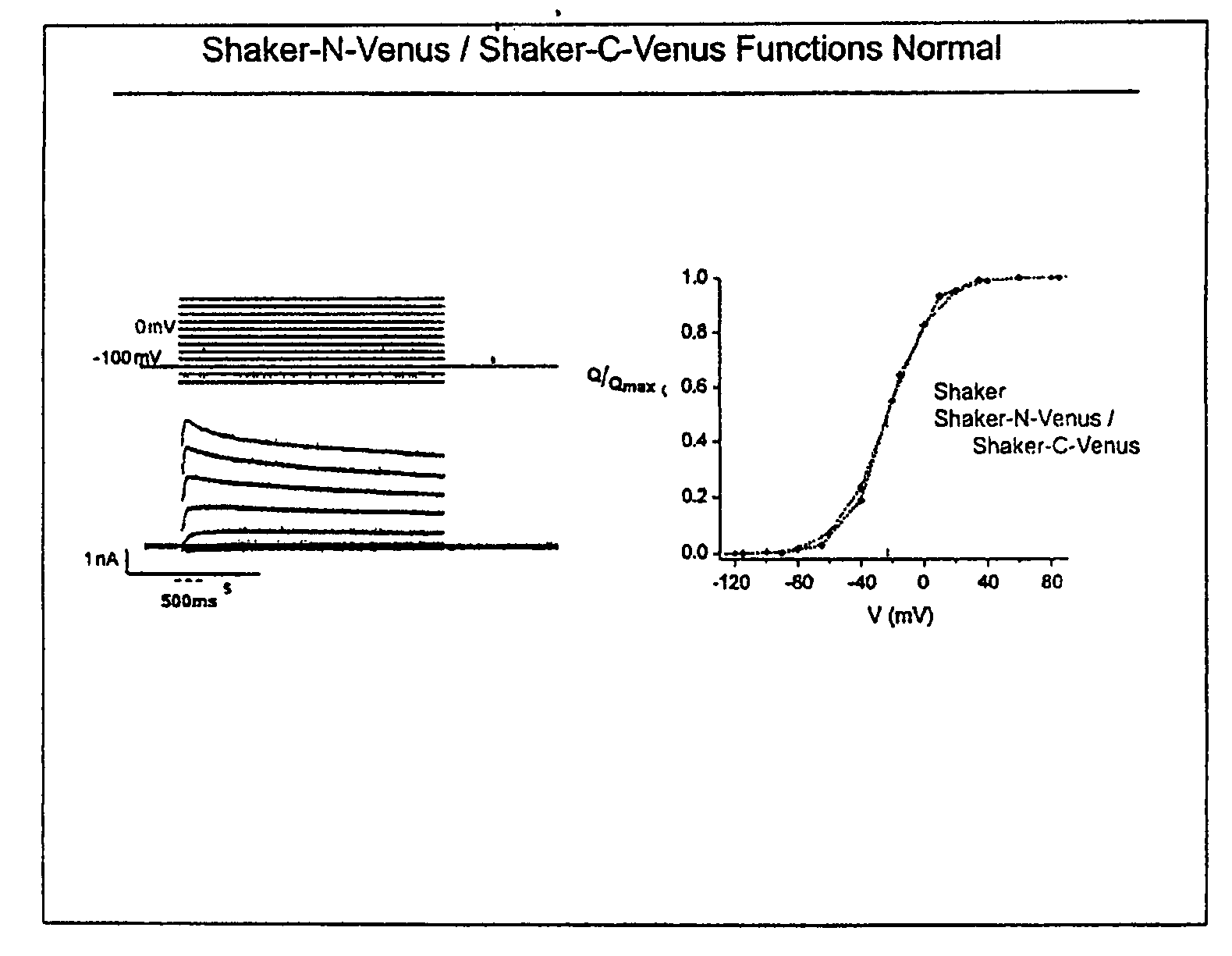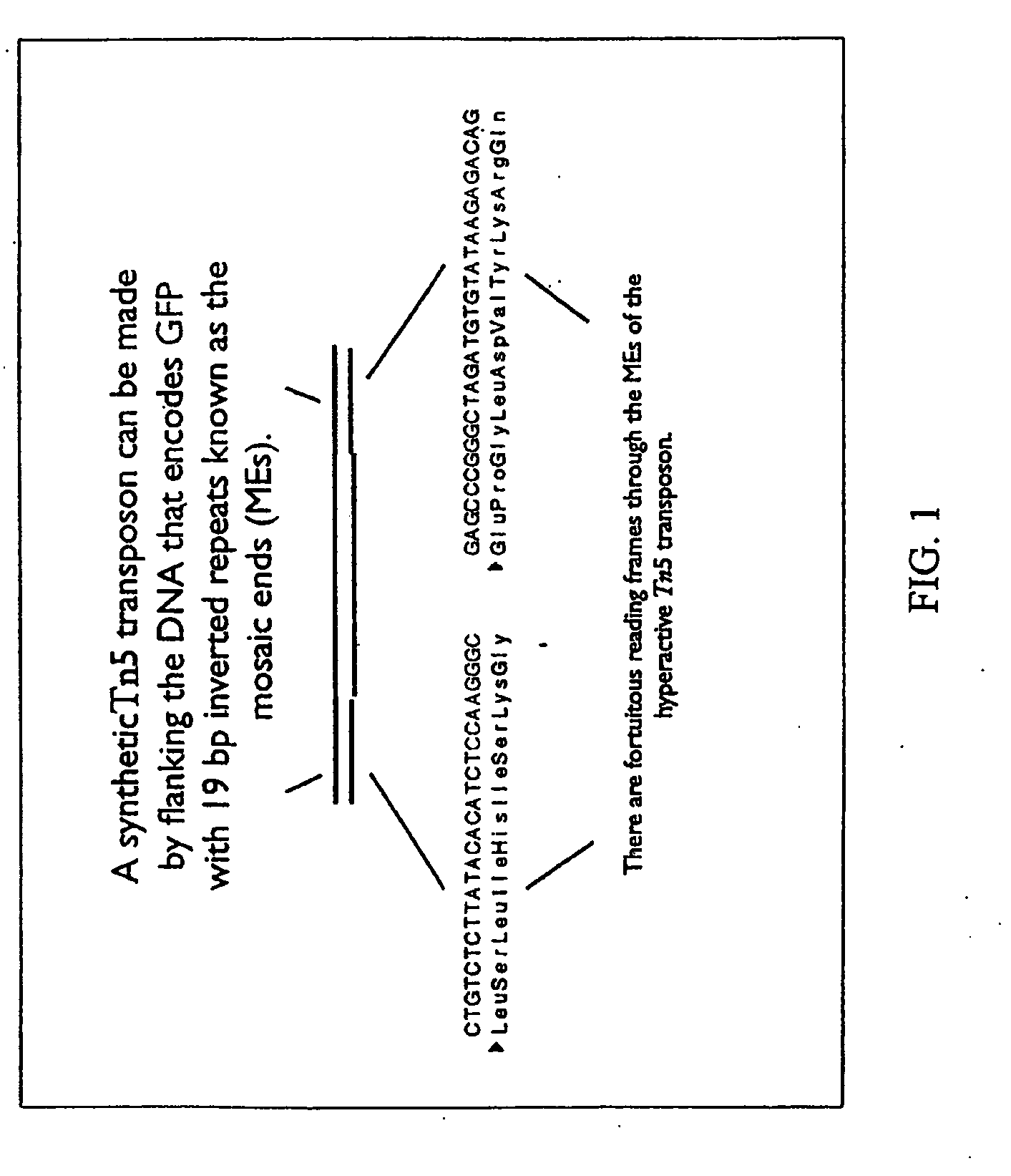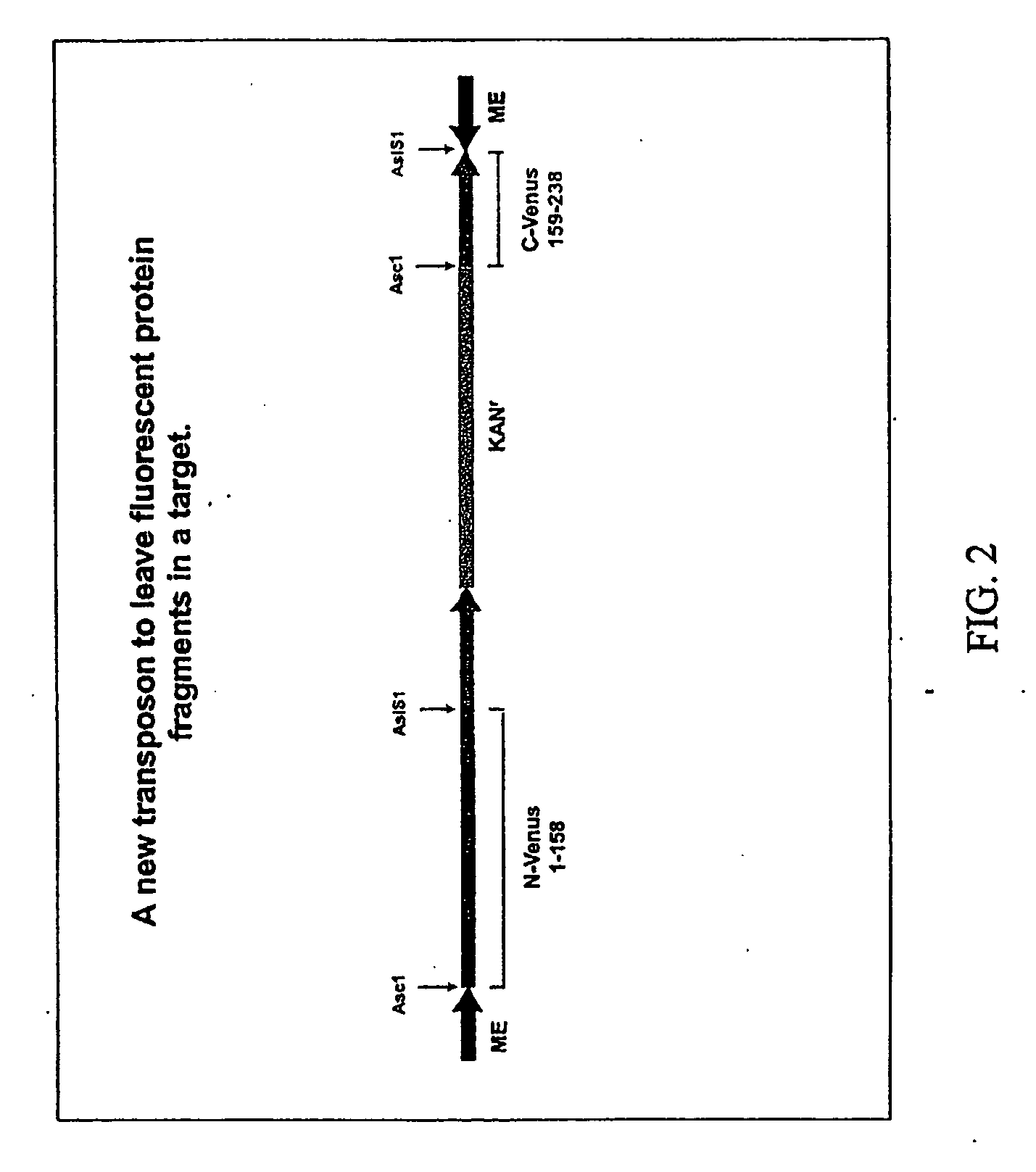System for detecting protein-protein interactions
a protein interaction and protein technology, applied in the field of complementation assays for the study of protein interactions, can solve the problems of only working protein interaction screens that depend on placing complimenting fragments at the ends of fusion partners, protein interactions in which the ends of two proteins are too far apart, and protein interactions that are los
- Summary
- Abstract
- Description
- Claims
- Application Information
AI Technical Summary
Benefits of technology
Problems solved by technology
Method used
Image
Examples
example 1
Construction of a Synthetic Tn5 Transposon
[0079]To create a transposon for generating random fusions to complementing fragments of a GFP reporter, we used the mosaic ends from a hyperactive Tn5 transposon. The mosaic ends are simply 19 base pair inverted repeats (SEQ ID Nos. 1 and 2) that can be placed on either side of any stretch of DNA to create a Tn5 transposon (see FIG. 1). These Tn5 ends are particularly suitable for creating fusion proteins in that there is an open reading frame that crosses the ends in either orientation.
[0080]We created a Tn5 transposon (pBonjovi) with PCR and standard subcloning techniques that carried the mosaic ends on either end of a segment of DNA that would, in combination with recombinant Tn5 transposase become inserted into a target plasmid. This is an in vitro reaction in which the transposase recognizes the mosaic ends of the transposon and inserts the transposon in a reasonably random fashion into any other DNA present in the reaction. We positio...
example 2
Isolation of YFP Complementing Fragments Fused Internally to Shaker Subunits
[0082]To test the process, we targeted the Shaker potassium channel. The Shaker potassium channel is a voltage-gated ion channel that is composed of 4 identical subunits. Our rationale was that if we created many different versions of the subunit, containing the two different fragments of the fluorescent protein, we could use pairwise expression of the different subunits to determine whether any complementation could occur between adjacent subunits.
[0083]The sequence encoding the Shaker subunit was first moved as a restriction fragment into a small CMV expression plasmid. An in vitro reaction with the plasmid containing the Shaker subunit coding region, the transposon pBonjovi, and recombinant Tn5 transposase was used to insert the transposon sequence. Transformation of Top 10f′E. coli with 1 ul of the 15 ul in vitro reaction produced greater than 3,000 colonies that displayed both the ampicillin resistance ...
example 3
Measuring Voltage Dependent Changes Using Shaker Complementing Subunits
[0088]When the complementing pairs were screened for voltage dependent changes in fluorescence, two pairs of subunits were identified that produced changes in fluorescence of approximately 20% as a result of depolarization of the cells with high concentrations of extracellular potassium (see FIG. 11). Thus, interacting complementing subunits may also be used as new biosensors for detecting changes in extracellular potassium. Voltage versus gating measurements indicate that some pairs of the complementing subunits produce a normally functioning channel when expressed in HEK 293 cells, showing that complementing pairs may be isolated that retain the function of the interacting subunits (see FIG. 12).
[0089]The results of our work show that GFP fragments can be inserted deep in the structure of two interacting proteins and still complement one another to form a fluorophore. This means that the approach can be used wi...
PUM
| Property | Measurement | Unit |
|---|---|---|
| Concentration | aaaaa | aaaaa |
| Electrical resistance | aaaaa | aaaaa |
| Protein activity | aaaaa | aaaaa |
Abstract
Description
Claims
Application Information
 Login to View More
Login to View More - R&D
- Intellectual Property
- Life Sciences
- Materials
- Tech Scout
- Unparalleled Data Quality
- Higher Quality Content
- 60% Fewer Hallucinations
Browse by: Latest US Patents, China's latest patents, Technical Efficacy Thesaurus, Application Domain, Technology Topic, Popular Technical Reports.
© 2025 PatSnap. All rights reserved.Legal|Privacy policy|Modern Slavery Act Transparency Statement|Sitemap|About US| Contact US: help@patsnap.com



